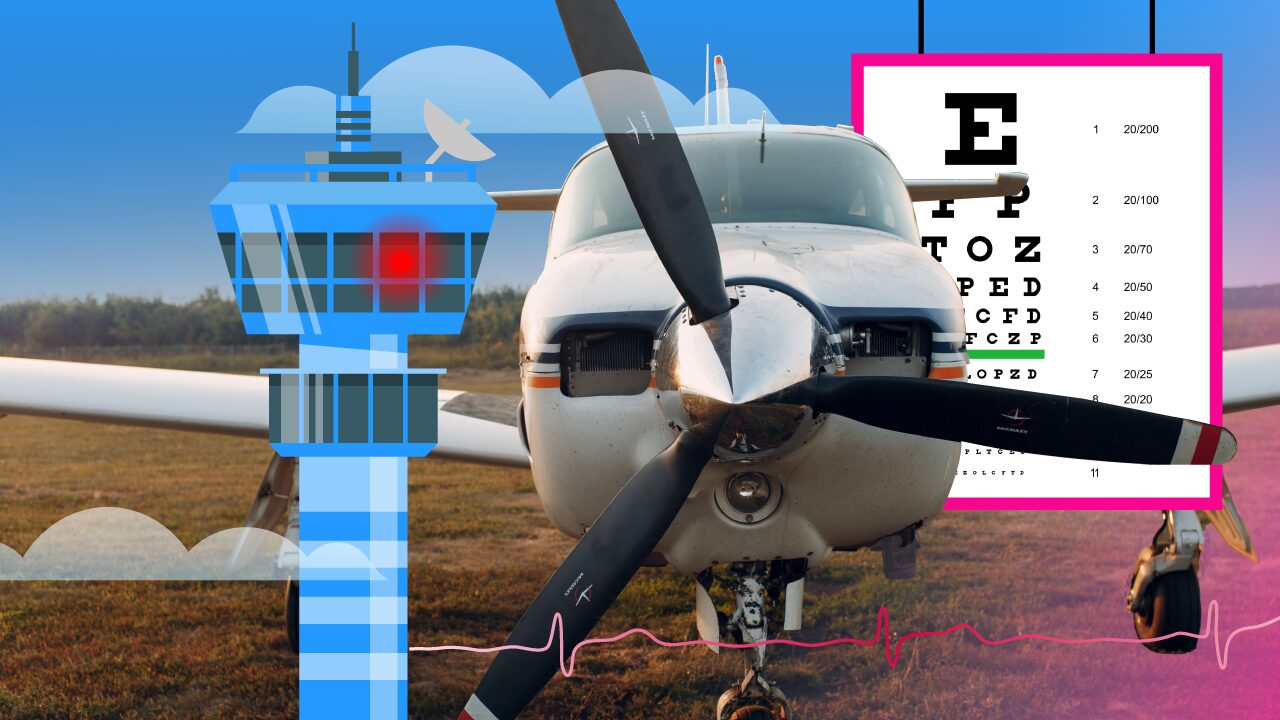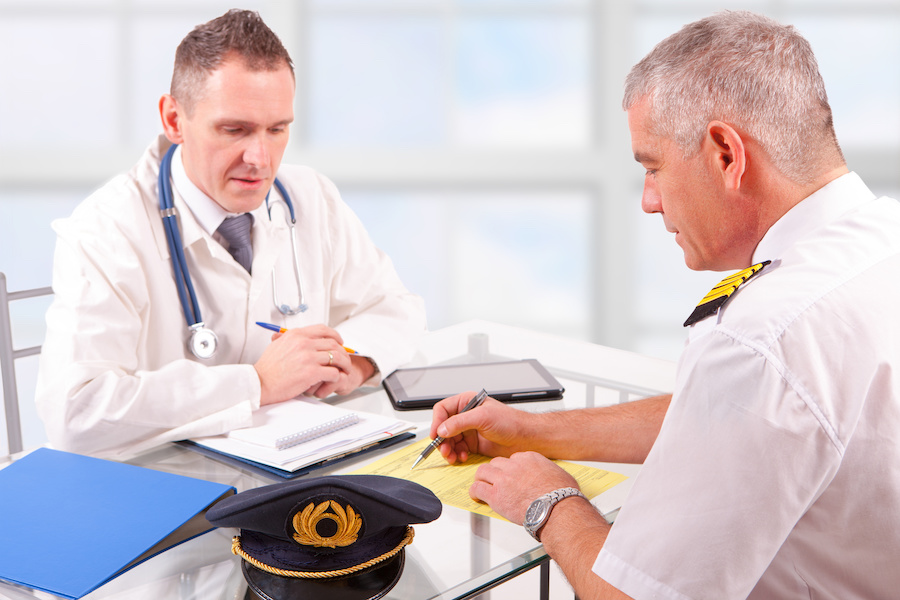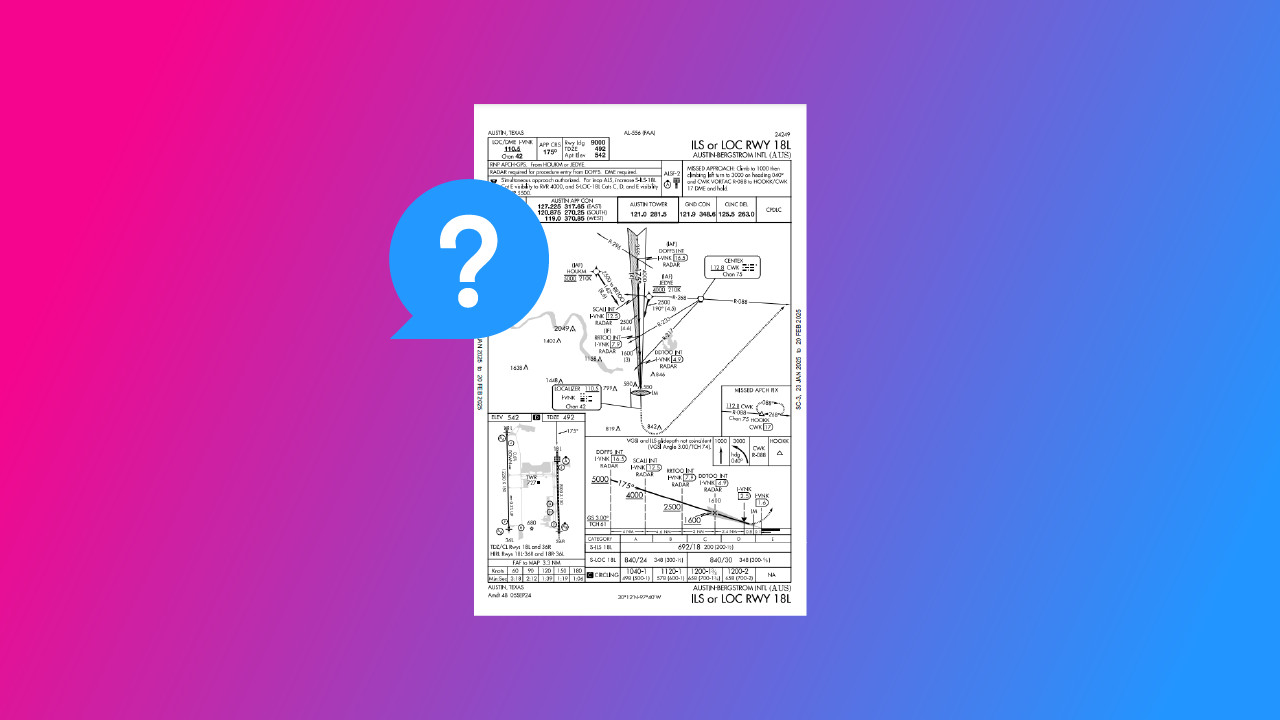-
Key Takeaways
-
General Requirements For All Medical Certificates
- Near Vision
- Color Vision
- Hearing
- Ear, Nose, and Throat
- Pulse
- Blood Pressure
- Mental
- Substance Dependence and Substance Abuse
- Disqualifying conditions
-
First Class Medical Certificate
- Vision Requirements
- Electrocardiogram
-
Second Class Medical Certificate
- Vision Requirements
-
Third Class Medical Certificate
- Vision Requirements
-
Disqualification of Current Medical Certificates
-
Special Issuance
- Statement of Demonstrated Ability
-
BasicMed
- Eligibility Requirements
- Aircraft & Operational Restrictions
- Limitations Under BasicMed
-
Conclusion
Are you interested in obtaining a Federal Aviation Administration (FAA) Medical Certificate?
For many, the prospect of taking the FAA medical exam for the first time can be daunting due to uncertainty about meeting the requirements.
In this article, you will learn the requirements for each FAA medical certificate.
Key Takeaways
- There are general requirements for all classes of medical certificates.
- The first-class medical certificate has the most requirements.
- The third-class medical certificate has the least requirements.
- While the medical certificate is issued for a time period, there are disqualifying conditions.
- There are medical conditions that can cause your medical to be temporarily suspended.
- Pilots that do not meet the requirements for a medical certificate can receive special issuances.
- Pilots can also choose to fly under BasicMed instead of a medical certificate.
General Requirements For All Medical Certificates
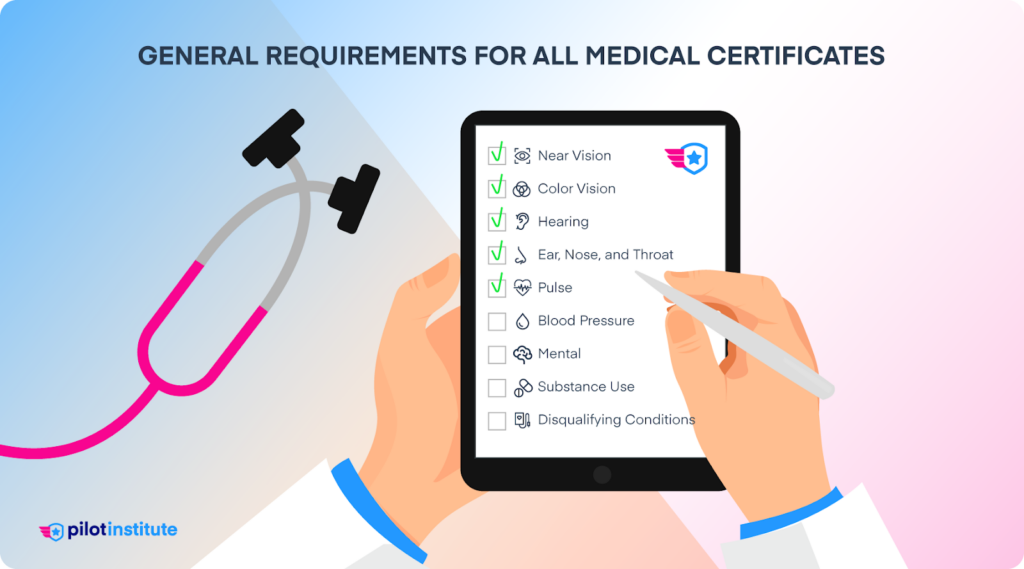
All classes of medical certificates follow the same general requirements.
First-class medical certificates have the most additional requirements, while third-class certificates have the fewest.
Here are the general requirements for all classes of medical certificates.
Near Vision
The near vision test requires a 20/40 or better in each eye separately, with or without correction, measured at 16 inches.
This test can also be conducted using a Snellen Chart for the Snellen equivalent of the near vision test.
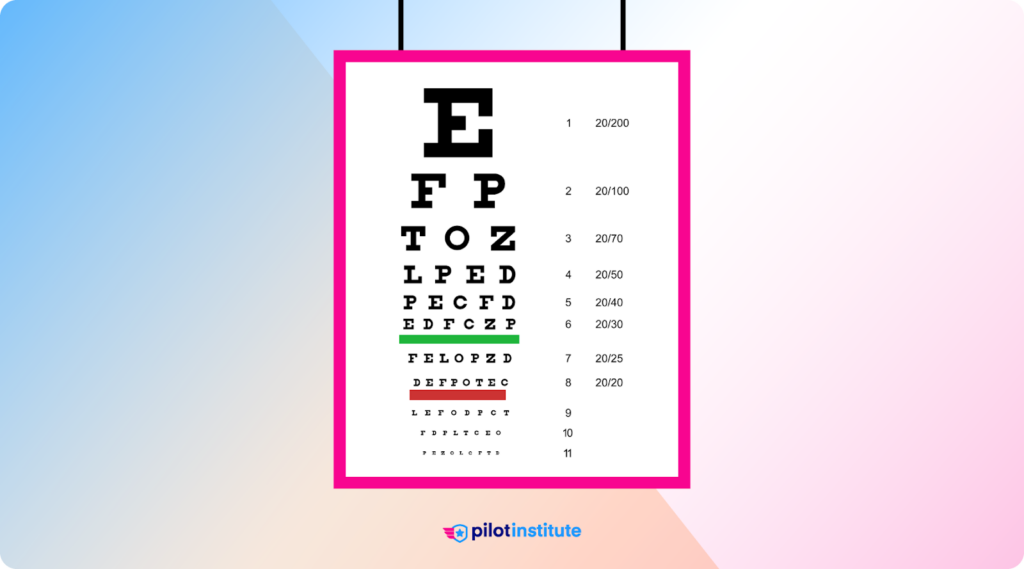
A person with 20/40 vision sees things at 20 feet that most people who don’t need vision correction can see at 40 feet.
Color Vision
Ability to perceive those colors necessary for the safe performance of airman duties.
This is often tested using a pseudo isochromatic color plate test, such as the “Ishihara” test.
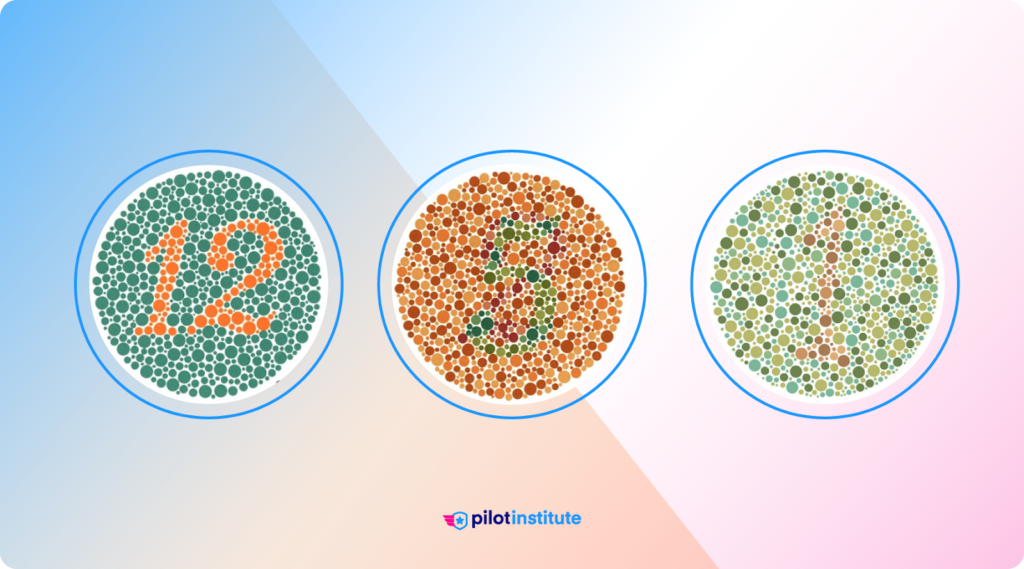
If you can discern the embedded number in the color plate in the test, you will pass the color vision test.
You can learn more about color vision and medical certificates for color-blind pilots in this article.
Hearing
Able to hear an average conversational voice in a quiet room, using both ears at 6 feet, with the back turned to the Aviation Medical Examiner (AME), or pass an audiometric test.
Audiometric Test
The audiometric speech discrimination test requires a score of at least 70% reception in one ear at an intensity of no greater than 65 dB.
You can also take the pure tone audiometric test. Unaided, with thresholds no worse than listed below:
Sound Levels
| Ear Condition | 500 Hz | 1,000 Hz | 2,000 Hz | 3,000 Hz |
| Better Ear | 35 dB | 30 dB | 30 dB | 40 dB |
| Worse Ear | 35 dB | 50 dB | 50 dB | 60 dB |
Ear, Nose, and Throat
The applicant must not have throat issues that could cause a speech problem.
The applicant must also have no nose or ear issues that cause equilibrium problems, such as vertigo. Vertigo is a sensation of moving, spinning, or being off balance, and it is related to problems with the inner ear.
Pulse
The medical standards do not specify pulse rates that disqualify medical certification. These tests are used, however, to determine the cardiovascular system’s status and responsiveness.
Abnormal pulse rates may be a reason to conduct additional cardiovascular system evaluations.
Blood Pressure
The standards do not specify values, but the current guideline maximum value is 155/95.
The first number is the systolic pressure, the force at which your heart pumps blood around your body. The second number is the diastolic pressure, which is the resistance to blood flow in the blood vessels between heartbeats.
A regular, healthy blood pressure reading should be less than 120/80.
Mental
The applicant must not have any diagnosis of psychosis, bipolar disorder, or severe personality disorders.
Substance Dependence and Substance Abuse
A diagnosis or medical history of “substance dependence” is disqualifying. This can be overruled if there is clinical evidence satisfactory to the Federal Air Surgeon for recovery. This includes sustained total abstinence from the substance(s) for not less than the preceding 2 years.
A history of “substance abuse” within the preceding 2 years is disqualifying. This includes alcohol and drugs. Some drugs the FAA has listed include:
- PCP
- Sedatives and Hypnotics
- Anxiolytics
- Marijuana
- Cocaine
- Opioids
- Amphetamines
- Hallucinogens
- Other psychoactive drugs or chemicals
Disqualifying conditions
Unless otherwise directed by the FAA, the AME must deny or defer if the applicant has a history of:
- Diabetes mellitus requiring hypoglycemic medication.
- Angina pectoris.
- Coronary heart disease (CHD) that has been treated or, if untreated, has been symptomatic or clinically significant.
- Myocardial infarction.
- Cardiac valve replacement.
- Permanent cardiac pacemaker.
- Heart replacement.
- Psychosis.
- Bipolar disorder.
- Personality disorder that is severe enough to have repeatedly manifested itself by overt acts.
- Substance dependence.
- Substance abuse.
- Epilepsy.
- Disturbance of consciousness and without satisfactory explanation of cause.
- Transient loss of control of nervous system function(s) without satisfactory explanation of cause.
First Class Medical Certificate
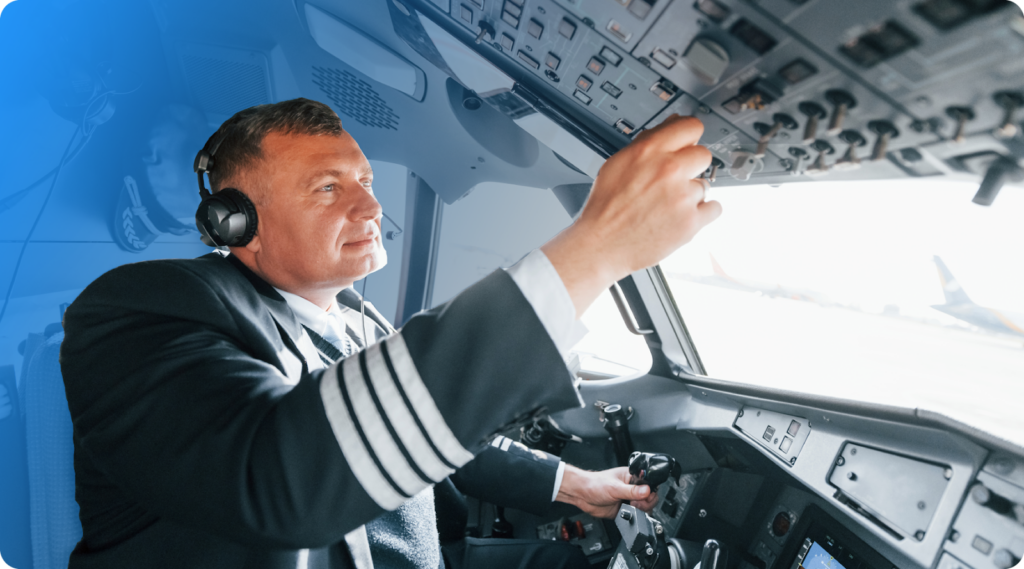
The first-class medical certificate has the most additional requirements.
The first-class medical certificate is for Airline Transport Pilot (ATP) duties. These airline pilots fly hundreds of passengers across the country and the world.
Vision Requirements
Distant Vision
20/20 or better in each eye separately, with or without corrective lenses.
Intermediate Vision
20/40 or better in each eye separately (Snellen equivalent), with or without correction at age 50 and over, measured at 32 inches.
Electrocardiogram
An electrocardiogram (ECG) test is required at age 35. It is conducted annually after age 40.
An ECG test checks the heartbeat by recording the electrical signals in the heart. This is done using electrodes (small patches that stick to the skin) placed at certain spots on the body. These electrodes are connected to an ECG machine, and the heart’s electrical activity is measured.
Second Class Medical Certificate

The second-class medical certificate has slightly fewer additional requirements to obtain the medical certificate.
The second-class medical certificate is for commercial pilot duties. These are pilots carrying passengers or cargo for hire.
Vision Requirements
The vision requirements of the second-class and first-class medical certificates are the same.
Distant Vision
20/20 or better in each eye separately, with or without corrective lenses.
Intermediate Vision
20/40 or better in each eye separately (Snellen equivalent), with or without correction at age 50 and over, measured at 32 inches
Third Class Medical Certificate
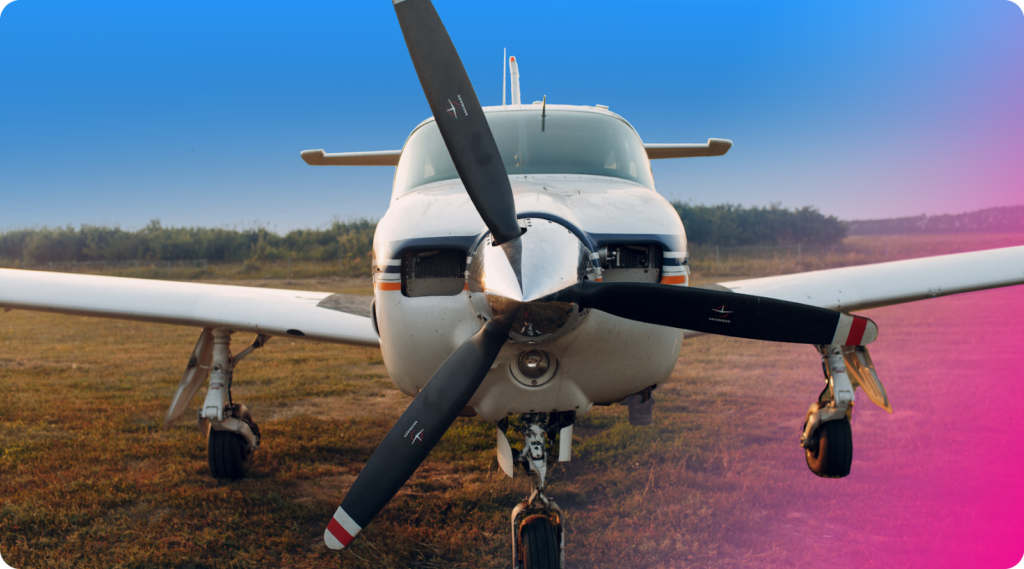
The third-class medical certificate has the least additional requirements to obtain the medical certificate.
The third-class medical certificate allows the pilot to perform private pilot duties. These are for pilots who fly recreationally with no commercial activity involved.
Vision Requirements
Distant Vision
20/40 or better in each eye separately, with or without correction.
There is no requirement for intermediate vision for the third-class medical certificate.
Disqualification of Current Medical Certificates
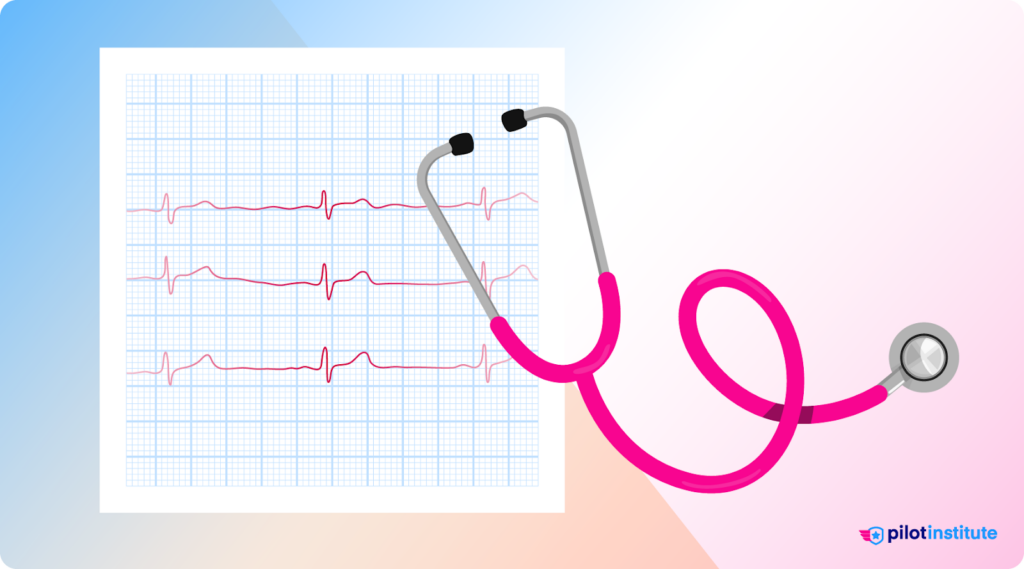
You can “lose” your medical if you develop a medical condition.
These medical conditions include:
- Personality disorder manifested by overt acts
- Psychosis
- Alcoholism
- Drug dependence
- Epilepsy
- Unexplained disturbance of consciousness
- Myocardial infarction
- Angina pectoris
- Diabetes requiring medication
Some medical conditions will only temporarily disqualify you from having a medical certificate. The FAA lists examples such as acute infections, anemia, and peptic ulcers.
Special Issuance

Pilots who do not meet medical standards may still be qualified under special issuance or the exemption process. This may require either additional medical information or practical flight tests.
A Federal Air Surgeon authorizes the special issuance of a medical certificate to the applicant.
The applicant has to demonstrate to the Federal Air Surgeon that the pilot duties can be performed without endangering public safety. This demonstration is done through a special medical flight test, practical test, or medical evaluation.
The special issuance has a validity period, and certificate renewal requires another demonstration.
Let’s use an example of being a color-blind pilot.
If you don’t pass the standard pilot color blind tests, you can still be a pilot if you can prove to the Federal Air Surgeon that you can:
- Identify light signals, airport and airplane lights.
- Read aeronautical charts.
- Interpret terrain and obstacles.
However, you would have restrictions such as no night flying and color signal control. This test is repeated every time you go for a medical certificate renewal.
Statement of Demonstrated Ability
A Statement of Demonstrated Ability (SODA) can also be issued by a Federal Air Surgeon. This is given to applicants whose disqualifying condition is static or nonprogressive.
Similar to the special issuance, the applicant must be capable of performing pilot duties without endangering public safety.
However, unlike the special issuance, a SODA does not expire. When the pilot has to renew the medical certificate, an AME is authorized to issue a medical certificate if the examiner finds the condition described has not adversely changed.
BasicMed
BasicMed allows pilots to fly without holding an FAA medical certificate, provided they meet specific conditions. Recent updates to BasicMed under the FAA Reauthorization Act of 2024 have expanded its privileges, allowing pilots to operate larger aircraft and carry more passengers.
Eligibility Requirements
To qualify for BasicMed, a pilot must:
- Hold a valid FAA pilot certificate.
- Hold a valid state-issued driver’s license.
- Have held a valid FAA medical certificate on or after July 14, 2006 (that was not denied, revoked, or suspended).
- Complete a medical exam with a state-licensed physician every 48 calendar months using the FAA’s Comprehensive Medical Examination Checklist (CMEC).
- Complete an FAA-approved online medical education course every 24 calendar months.
Aircraft & Operational Restrictions
Under the FAA Reauthorization Act of 2024, BasicMed now applies to larger aircraft and more passengers. Pilots operating under BasicMed may:
- Carry up to six passengers (previously five).
- Operate an aircraft with up to seven occupants total (previously six).
- Fly aircraft with a maximum takeoff weight of up to 12,500 lbs. (previously 6,000 lbs.).
- Conduct practical tests and proficiency checks under BasicMed if they meet the medical eligibility requirements.
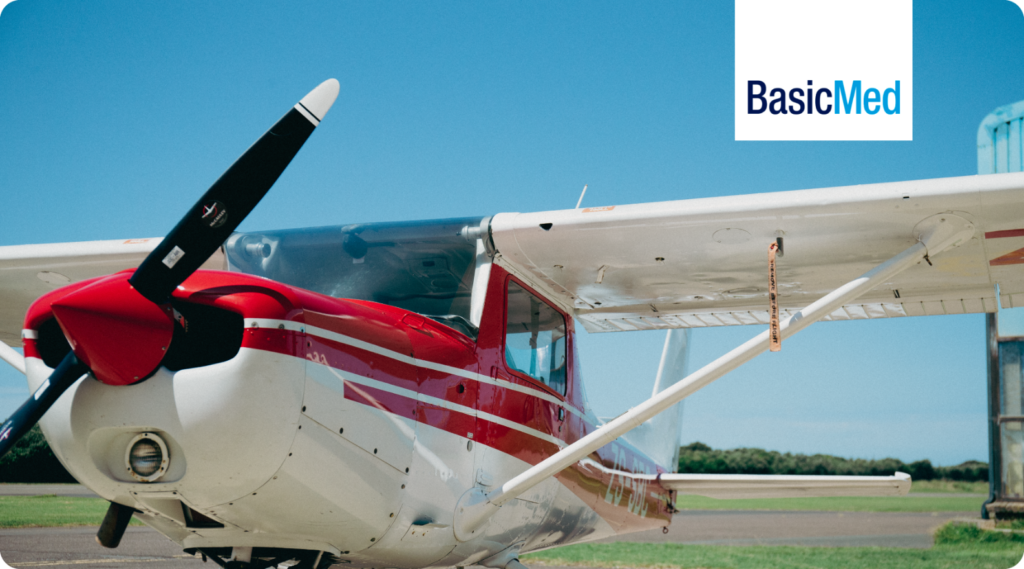
Limitations Under BasicMed
While BasicMed offers flexibility, it comes with some operational limits:
- No flying above 18,000 feet MSL.
- No exceeding 250 knots airspeed.
- Not valid for compensation or hire.
- Transport category helicopters (Part 29-certified rotorcraft) are excluded from BasicMed operations.
Conclusion
If you plan to make aviation a career, we highly recommend ensuring you qualify for the first-class medical. This ensures you are eligible to work at the airlines, even though you only need a third-class medical as a student pilot.
You can also consult your local AME for more information before taking the medical exam.
For further reading of regulations, the medical standards are found in 14 Code of Federal Regulations (CFR) Part 67. The medical certificate requirements and durations are in 14 CFR Part 61.23.You can also use our article, Medical Certificates Explained, for more information.
